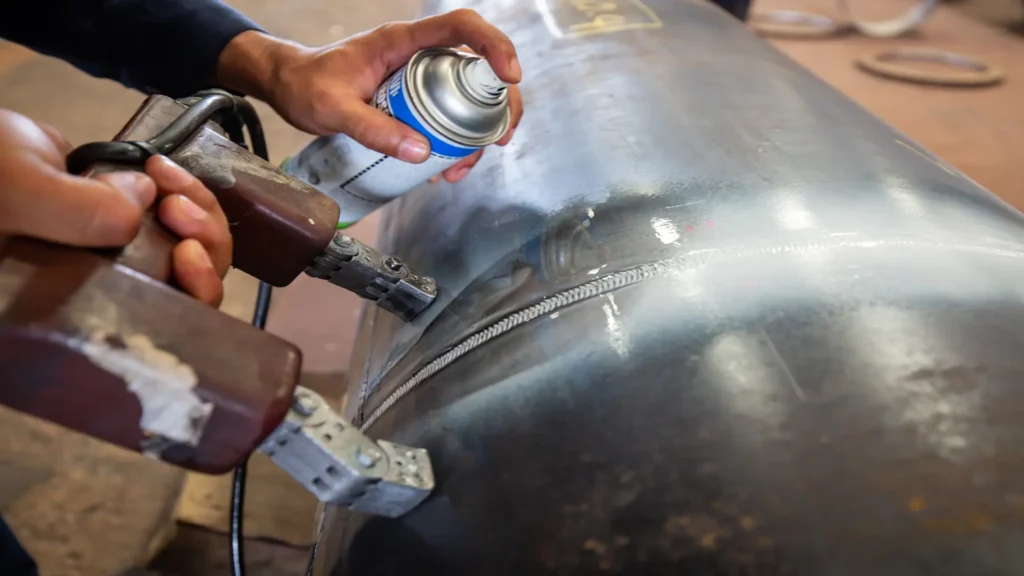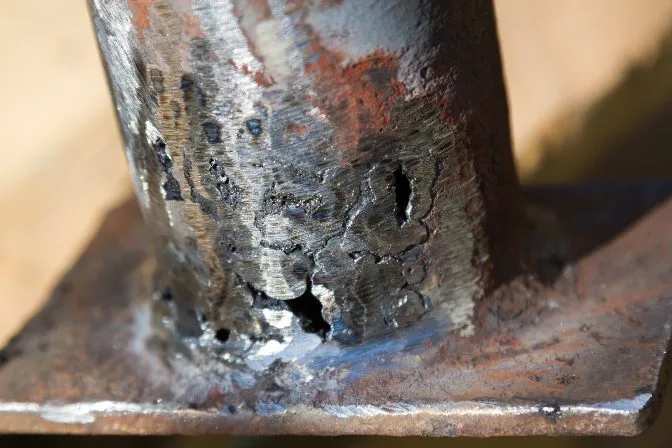Recognizing the Principles of Welding Assessment to Guarantee Quality and Safety And Security
In the realm of modern engineering, welding examination stands as a cornerstone for making sure both the top quality and safety and security of structural productions. What are the subtleties of these examination methods that make them indispensable for keeping architectural integrity?

Value of Welding Examination
In the world of commercial construction, the relevance of welding evaluation can not be overstated. Welding examination plays a critical function in ensuring the honesty, safety, and long life of welded frameworks (Welding Inspection Madison).
The process of welding inherently involves complicated variables, consisting of temperature level, product properties, and environmental conditions, all of which can influence the quality of the weld. A complete assessment determines defects such as splits, porosity, and incomplete combination, which can jeopardize the strength and reliability of the weld. By spotting these concerns early, rehabilitative activities can be taken, thus minimizing the danger of failure and connected costs.
Furthermore, welding inspection adds to regulatory conformity, as lots of sectors are regulated by rigorous safety criteria and guidelines. Failing to comply with these laws can cause financial charges and legal liabilities. Ultimately, welding examination not just safeguards physical frameworks but also upholds and secures human lives market track records.

Secret Welding Assessment Methods
Although welding inspection is crucial to ensuring the high quality and safety and security of welded structures, it is the particular methods used that establish the effectiveness of the inspection process. Key welding inspection methods can be broadly classified right into non-destructive screening (NDT) and devastating screening. Non-destructive testing methods such as visual examination, ultrasonic testing, radiographic testing, magnetic fragment screening, and fluid penetrant screening are largely utilized to assess the buildings of a weld without triggering damage. Visual assessment is usually the very first step, entailing a thorough assessment of the weld's surface area for defects like fractures or porosity.
Magnetic fragment screening and liquid penetrant testing are surface area inspection approaches made use of to locate surface and near-surface flaws. These detailed examination techniques guarantee that welds meet market criteria and safety requirements, therefore making certain structural stability and efficiency.
Role of Licensed Examiners
Certified inspectors play an essential function in the welding inspection procedure, making sure that all welds abide by stringent sector criteria and safety policies. Their proficiency is important in recognizing flaws or abnormalities that might jeopardize the structural stability of a weld. By carefully analyzing each weld, certified inspectors aid prevent potential failings that can lead to hazardous crashes or expensive fixings.
To become qualified, assessors need to go through extensive training and testing, which acquaints them with various welding methods, materials, and testing methods. This extensive expertise enables them to evaluate weld quality successfully and make informed judgments about their security and integrity. Licensed assessors are proficient in interpreting blueprints and specifications, guaranteeing that the welding job aligns with the task's style requirements.
An essential component of their role is to document their searchings for thoroughly, offering a comprehensive record of the inspection procedure. Their contribution is essential in preserving high degrees of quality and safety and security in welding operations.

Devices Utilized in Welding Assessment
Welding assessors depend on a range of specialized tools to execute their tasks effectively, making sure each weld satisfies the necessary criteria. Amongst these devices, visual evaluation help like magnifying glasses and mirrors are essential, enabling assessors to very closely examine welds for surface area problems such as fractures, porosity, and undercut. Calipers and fillet weld assesses are essential for determining weld measurements to confirm conformity with layout specifications.
Advanced tools extend past aesthetic help, including non-destructive screening (NDT) check this site out tools. Ultrasonic testing devices are pivotal in discovering subsurface problems, utilizing sound waves to disclose inner stoppages without jeopardizing the weld's honesty. Radiographic screening utilizes X-rays or gamma rays to record photos of a weld's interior, highlighting possible defects.
Magnetic bit screening is another essential tool, specifically for detecting surface area and near-surface gaps in ferromagnetic materials. By using electromagnetic fields and ferrous fragments, assessors can recognize flaws that might otherwise be unseen.
Dye penetrant assessment is often used for non-ferrous materials, supplying a contrast-enhanced aesthetic check for surface-breaking problems. Welding Inspection Madison. Together, these tools allow go welding assessors to thoroughly assess weld high quality, ensuring security and reliability in different applications across sectors
Ensuring Architectural Integrity

Welding treatments must stick to established requirements and codes, such as those defined by the American Welding Culture (AWS) or the International Company for Standardization (ISO) These guidelines make sure that the welds can withstand operational tensions and ecological variables. Qualified and certified welders play an important function in this procedure, as their competence ensures that techniques are applied appropriately, minimizing issues such as fractures, porosity, and incomplete combination.
Post-weld assessment is one more important component of validating architectural honesty. Non-destructive screening (NDT) techniques, consisting of ultrasonic screening and radiographic screening, are employed to spot subsurface flaws without jeopardizing the bonded framework. These inspections validate that the welds satisfy the required quality criteria, offering assurance of their sturdiness and dependability. Inevitably, making certain architectural honesty in welding not just safeguards human lives but additionally protects investments and improves the durability of crafted frameworks.
Final Thought
The principles of welding examination are crucial for maintaining the top quality and safety and security of bonded frameworks. By executing key examination techniques, Resources such as visual analyses and non-destructive testing, prospective defects that can endanger architectural integrity are recognized. Qualified inspectors are critical in making sure conformity with market requirements and reliable interaction amongst stakeholders. Using specialized devices additionally enhances the examination process, ultimately securing human lives and lengthening the lifespan of welded constructions.
Welding evaluation plays an essential function in making certain the honesty, safety and security, and durability of bonded structures.Although welding evaluation is crucial to making sure the top quality and security of welded structures, it is the details methods employed that figure out the efficiency of the assessment procedure. Key welding inspection approaches can be broadly categorized into non-destructive testing (NDT) and damaging screening.Licensed inspectors play a crucial role in the welding assessment process, guaranteeing that all welds abide with strict market criteria and safety regulations.The principles of welding inspection are important for preserving the quality and security of welded frameworks.